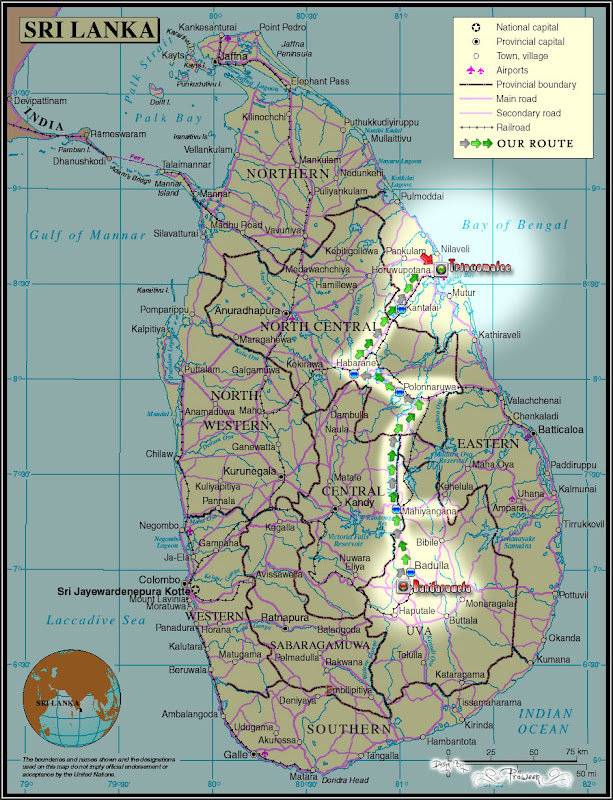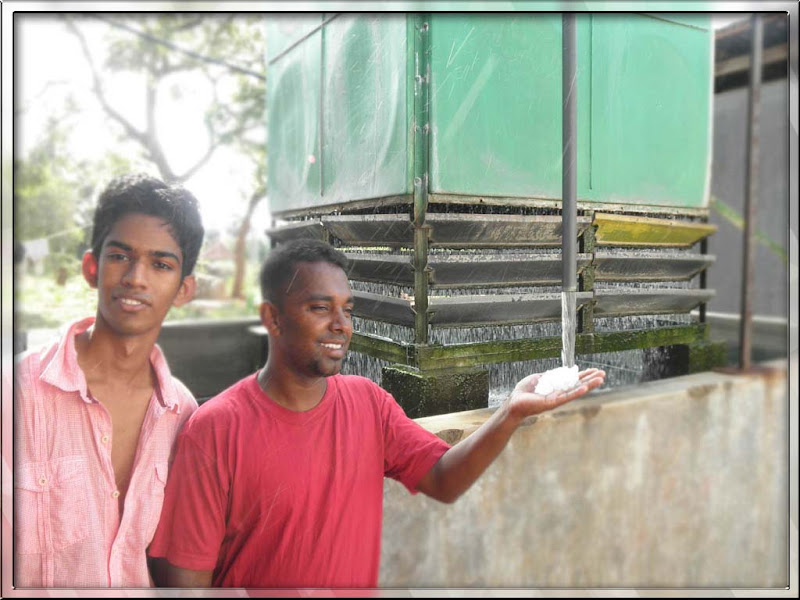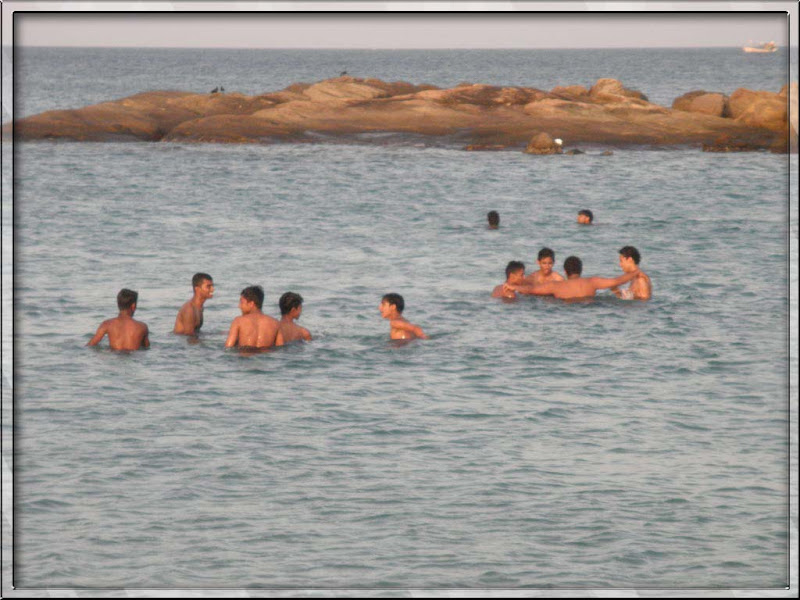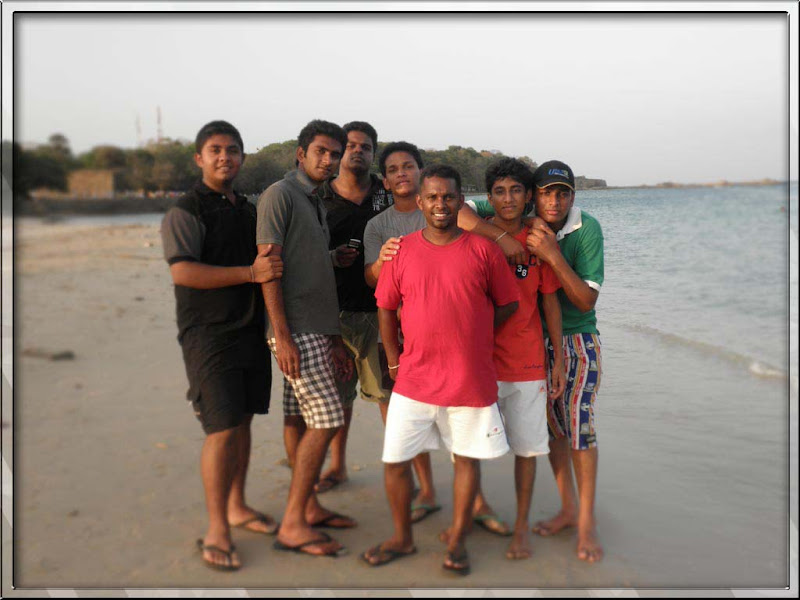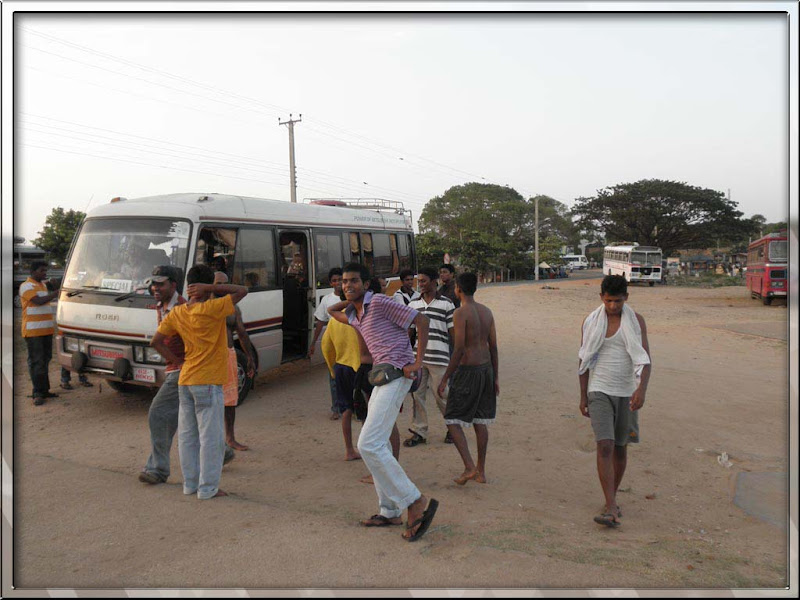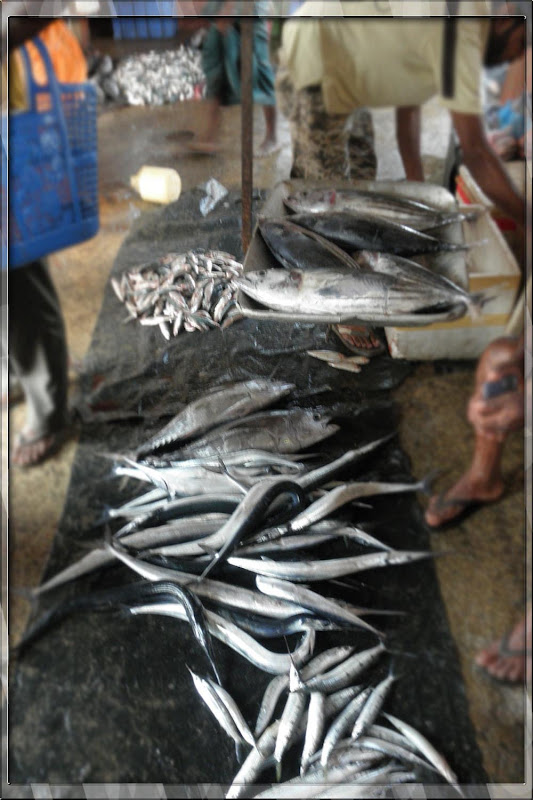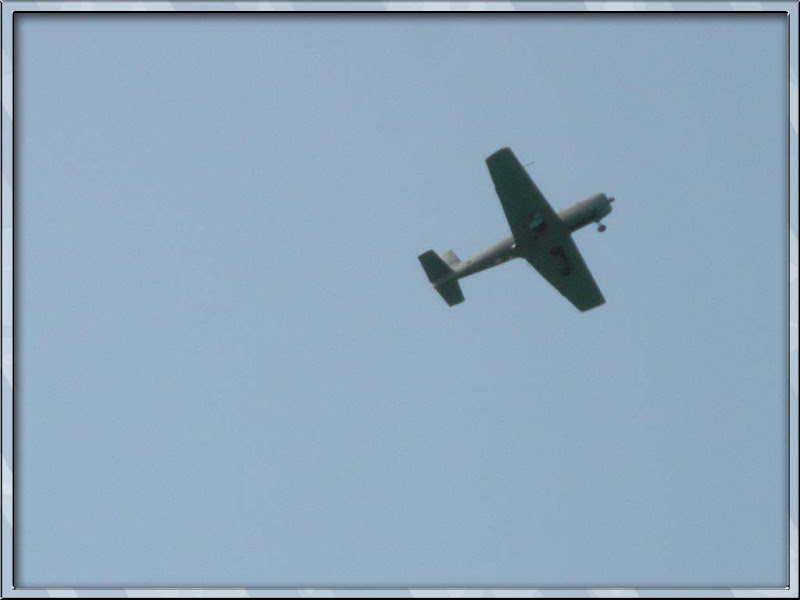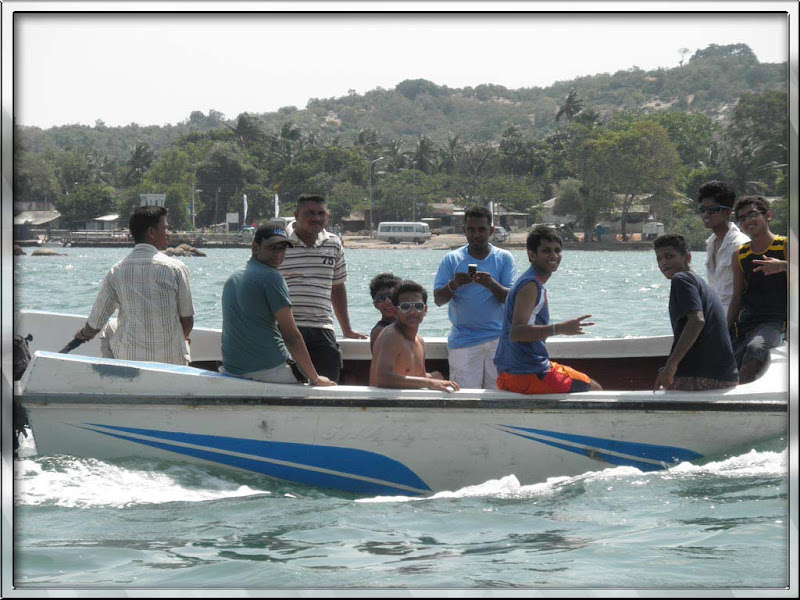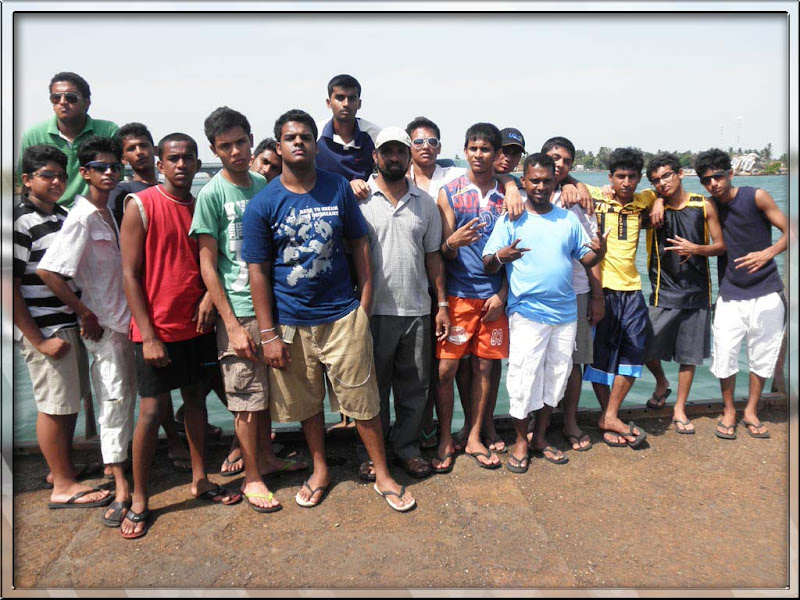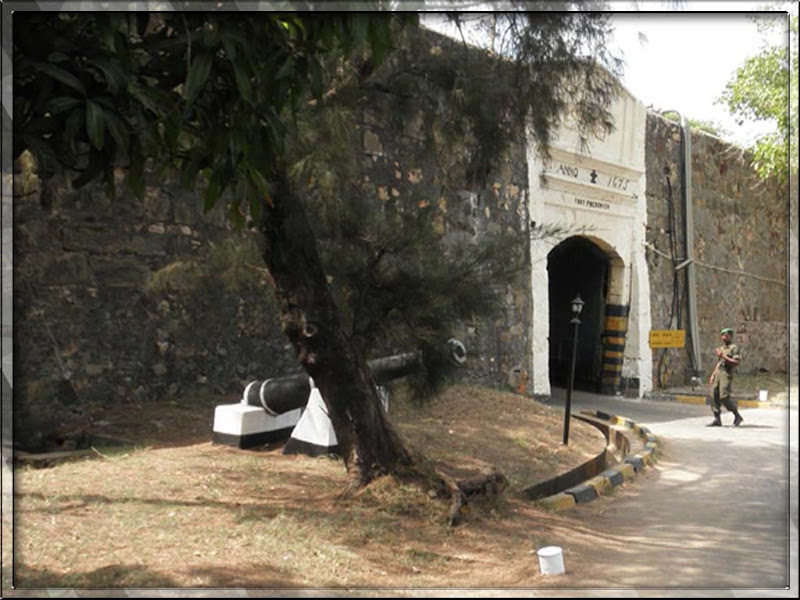Date: 04th,05th,06th June 2010
Route: Bandarawela > Badulla > Mahiyangana > Polonnaruwa > Habarana > Kantalai > Trincomalee
========================| 1st Day |================================================
=================================================================================
1 Depature 05.00 a.m.
2 Breakfast at Mahiyangana 08.30 a.m.
3 Enjoying on the way
4 Lunch & Bath at Kantale lake 12.00 noon
5 Reached Trincomalee at 02.30 p.m.


+++++++++++++++++++++++++++++++++++++++++++++++++++++++++++++++++++
Trincomalee
Trincomalee is a port city on the east coast of Sri Lanka, about 110 miles northeast of Kandy. The city is built on a peninsula, which divides the inner and outer harbours. It is one of the main centers of Tamil speaking culture on the island. Historically referred to as Gokanna, or Gokarna it has been a sea port that has played a major role in maritime and international trading history of Sri Lanka.
The Bay of Trincomalee's harbour is renowned for its large size and security; unlike every other in the Indian Sea, it is accessible to all types of craft in all weathers. The beaches are used for surfing, scuba diving, fishing and whale watching. The city also has the largest Dutch fort in Sri Lanka. It is home to major Sri Lankan naval bases and a Sri Lankan Air Force base.
Description:
Trincomalee is one of the main cities in the Eastern province which boasts of a natural harbor which was used by the Colonial British navy during WWII. More than 10,000 people cross the Kinniya lagoon daily between Kinniya and Trincomalee. The new bridge is 10 meters wide and there are two pavements, each 1.5 meters wide, for pedestrians. The bridge was constructed by a Chinese firm under the supervision of the Road Development Authority. "The bridge will connect Kinniya and Trincomalee and ease transport problems of the people in the Eastern province and would benefit more than a million people in the Eastern province as well as the others who come to Trincomalee district." Saudi Ambassador in Colombo, Abdul Aziz Abdul Rahman Al-Jammaz said.
The envoy explained that these people cross the lagoon by ferry and undergo numerous hardships to transport goods including household equipment and daily needs through the ferry. Both light and heavy vehicles are taken on this ferry which operates from morning till 10 p.m.
+++++++++++++++++++++++++++++++++++++++++++++++++++++++++++++++++++
7 Visited the Ice factory 04.30 p.m.
8 Bought fish for dinner
9 Sea bath at Trincomalee beach 05.30 p.m.
10 Met the other batch at Trincomalee beach
11 Reached home 06.30 p.m.
12 Singing and enjoying
13 Dinner 09.00 p.m.
14 Lights off 10.00 p.m.
========================| 2nd Day |===============================================
15 Woke up 06.30 a.m.
16 Bought fish
17 Breakfast 09.00 a.m.
18 On the way to Kinnia bridge ( Air Force Camp, Trinco)
19 Visited Kinniya Bridge 10.30 a.m.
20 Boat ride at Kinnia Bridge
21. Kanniya Hot Springs 12.15 a.m

+++++++++++++++++++++++++++++++++++++++++++++++++++++++++++++++++++
Hot Water Springs In Trincomalee - For A Therapeutic Bath
Trincomalee is one of the fastest developing regions in Sri Lanka at present. Ravaged by a savage civil war and a devastating tsunami, this magical part of the country has seen its fair share of destruction and is definitely ready to embrace the golden years of its existence. Before the civil war broke out Trincomalee was one of the most plentiful cities on the country and had great potential to be the centre of trade and commerce in the region as it is the home of the countrys largest natural harbor. Development came to a premature halt as the war broke out and it seemed that Trincomalee was to be forgotten forever. However, after more than 20 years the war came to an end in 2009, setting Trincomalee free to achieve its full potential.
The region of Kanniya , Trincomalee, is popular among both local and foreign travelers alike for its seven hot springs. These hot water springs have been made in to seven wells which are full of water during most parts of the year. These wells each vary in the level of water temperature and are popular due to their legendary origins. Legend has it that Vishnu, the Lord of the Past and the Present, wanted to trick Ravana in to thinking that his mother Kannya had passed away. Believing what Vishnu said, Ravana frantically searched for a source of water to cleanse his mothers body and prepare it for its last rites. Immediately Vishnu is said to have disappeared from the site and created the hot springs at the location where he stood.
Visitors are allowed to bathe from the wells but should be aware that conducting themselves in a restrained and reverent manner is a must as this is considered to be holy ground. The water of these wells are said to have therapeutic qualities which are said to help those with medical conditions such as arthritis and rheumatism.
John Keells Hotels Group offers Sri Lanka hotels with great facilities to the discerning traveler in need of comfortable accommodation. Several Trincomalee hotels are available to the visitor in search of gorgeous beaches and enchanting attractions, but few can match the level of service and modern amenities offered by John Keells Hotels Group.
+++++++++++++++++++++++++++++++++++++++++++++++++++++++++++++++++++
Lunch 01.15 p.m.
22 Dutch Fort 03.00 p.m.

+++++++++++++++++++++++++++++++++++++++++++++++++++++++++++++++++++
Dutch Fort
Fort Fredrick is a fort built by Portuguese at Trincomalee, Sri Lanka in 1624. It was built from the debris of the ancient Hindu temple - Koneswaram temple (Temple of a Thousand Pillars) that was destroyed by the Portuguese. This was captured by a Dutch fleet under Admiral Westerwold in 1639. Not until 1665 was a new fort built here by the Dutch defend against the advancements of the British and the French. In 1672, the year when the Dutch Republic was attacked by France, Britain, and two German states, the French captured Trincomalee and later they occupied Batticaloa. However soon the French were forced to leave. Trincomalee was important for its large all-season secure harbor. In late 18th century Trincomalee traded hands once more with the French capturing it again and later handing back to the Dutch East India Company (VOC) at the Peace of Paris in 1784. In 1795 it was taken over by the British, and remained a British garrison till 1948. Coastal artillery guns were added during the two World Wars. Today it remains garrisoned by a detachment of the Sri Lanka Army accessible to visitors.
+++++++++++++++++++++++++++++++++++++++++++++++++++++++++++++++++++
23 Koneswaram Temple 03.30 p.m.
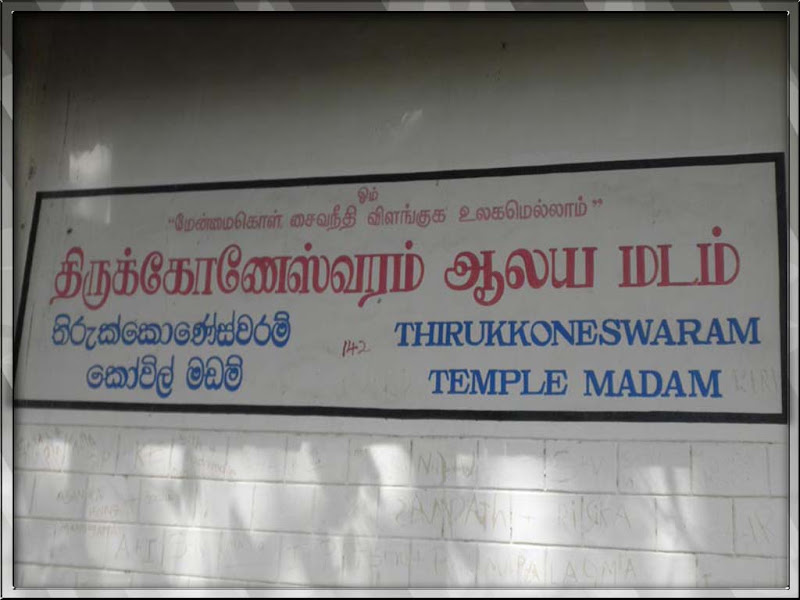
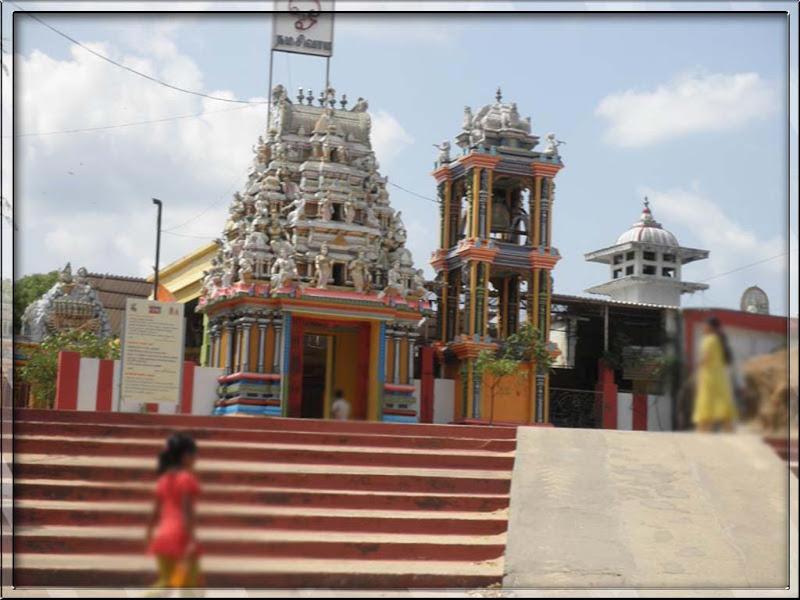

+++++++++++++++++++++++++++++++++++++++++++++++++++++++++++++++++++
Koneswaram temple
Koneswaram temple is an important Hindu temple in Eastern Province, Sri Lanka. The Koneswaram temple has a recorded history from 300 CE, and at its zenith was heralded as one of the richest and most visited temples in Asia. Built atop Swami Rock, overlooking the Trincomalee harbour, the temple has lay in ruins, been restored, renovated and enlarged by various royals and devotees throughout its history. One of five temples of the island dedicated to the Hindu deity Shiva whose construction began in the ancient period (Ishwarams), Koneswaram is venerated by Saivites in the region. Its bronze idol statues from the 10th century CE are considered some of the high points of Chola art. Throughout its history, the temple has been administered and frequented by Sri Lankan Hindu Tamils and is located in Trincomalee, a classical period port town with a mixed Sinhala, Tamil and Muslim population.
Myths surrounding the temple of Koneswaram associate it with the popular Indian epic Ramayana, and its legendary hero-king Rama. Koneswaram was developed in the post classical era, between 300 CE and 1600 CE by kings of the Tamil Pandyan and Chola empires, and Vannimai chiefs of the Eastern Province, with decorations and structural additions such as its famous thousand pillared hall furnished by kings of the Tamil Pallava dynasty and the Jaffna kingdom. This culminated in Koneswaram becoming one of the most important surviving buildings of the classical Dravidian architectural period by the early 1600s. In 1624 CE, the Konewaram temple was largely destroyed by the Portuguese colonials. Hindus built a successor temple at a nearby site in 1632 CE - the Ati Konanayakar temple in nearby Tampalakamam - to house some of the destroyed temple's idols, where they are now worshipped. In the 1950s, the ruins of the temple were discovered underwater beside Swami Rock. The Koneswaram temple was rebuilt of much more modest dimensions at its original site by local Hindu Tamils 450 years after its destruction. Rediscovered sculptures and idols from the original temple are installed in the reconstructed building. The annual temple festival attracts Hindus from around the country.
+++++++++++++++++++++++++++++++++++++++++++++++++++++++++++++++++++
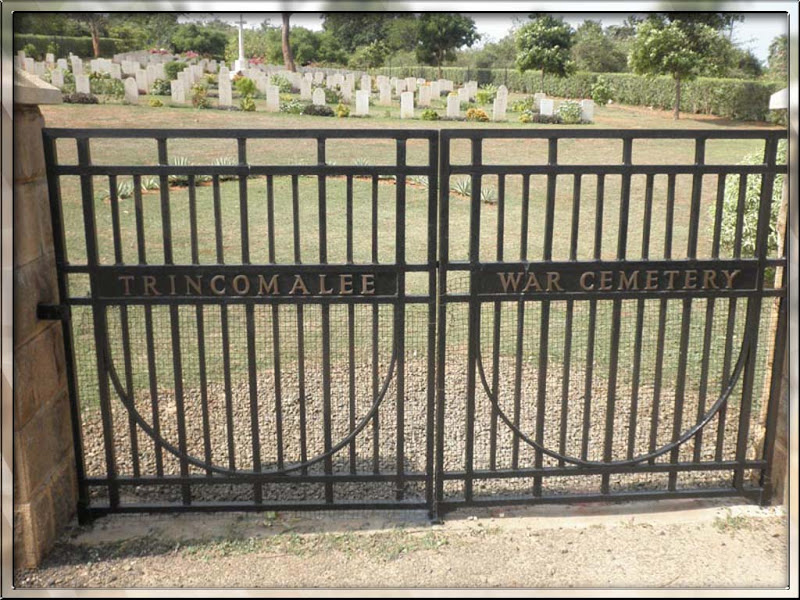


+++++++++++++++++++++++++++++++++++++++++++++++++++++++++++++++++++
TRINCOMALEE WAR CEMETERY
Trincomalee is a seaport on the north-eastern coast of Ceylon (now Sri Lanka) and was formerly a naval station. After the fall of Singapore it became a naval base of importance to our command of shipping in the Bay of Bengal and the Indian Ocean. The cemetery was originally the Combined Services Cemetery, but was taken over by the Admiralty from the military authorities in April 1948 for use as a permanent naval cemetery. On the withdrawal of United Kingdom Forces from Ceylon it became the property of the Ceylon Government who have granted the Commission security of tenure in perpetuity. Save for a few post-war and non-war graves it is purely a war cemetery, and service war graves were transferred to it from Trincomalee (St. Mary) Churchyard; Trincomalee (St. Stephen's) Cemetery, Kottadi Cemetery, Jaffna; and Vavuiyna Combined Cemetery. A special memorial commemorates a naval man buried in Trincomalee (St. Stephen's) Cemetery whose grave could not be found. The non-war graves are those of men of the Merchant Navy whose death was not due to war service, and of civilians, of whom some were employees of the Admiralty; while the post-war graves were dependents of servicemen, civilian employees of the Admiralty and dependents of such employees.
Location-
From the main A6 road, just south of the town of Trincomalee, turn left onto the North East Coast Road, also known as the Nilaveli Road. The cemetery is approximately 6 kilometres along this road on the right (eastern) side.
+++++++++++++++++++++++++++++++++++++++++++++++++++++++++++++++++++
25 Sea bath at Nilaweli beach 04.45 p.m.
26 Enjoying after the sea bath
27 Reached home 06.45 p.m.
28 Barbeque in the night
29 Lights off 10.30 p.m.
========================| 3rd Day |===============================================
30 Woke up at 06.30 a.m.
31 Bought fish to take home.
32 Went home packed the bags,
cleaned the house and left to Bandarawela at 10.30 a.m.
33 Had lunch on the way at Habarana. 12.30 p.m.
35 Had a bath in a lake at Polonnaruwa 02.30 p.m.
36 Had dinner at Meegahakiula at 07.30 p.m.
37 Reached Bandarawela at 10.00 p.m.
~End of the Tour~
Subscribe to:
Posts (Atom)
